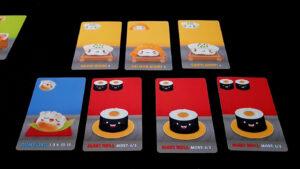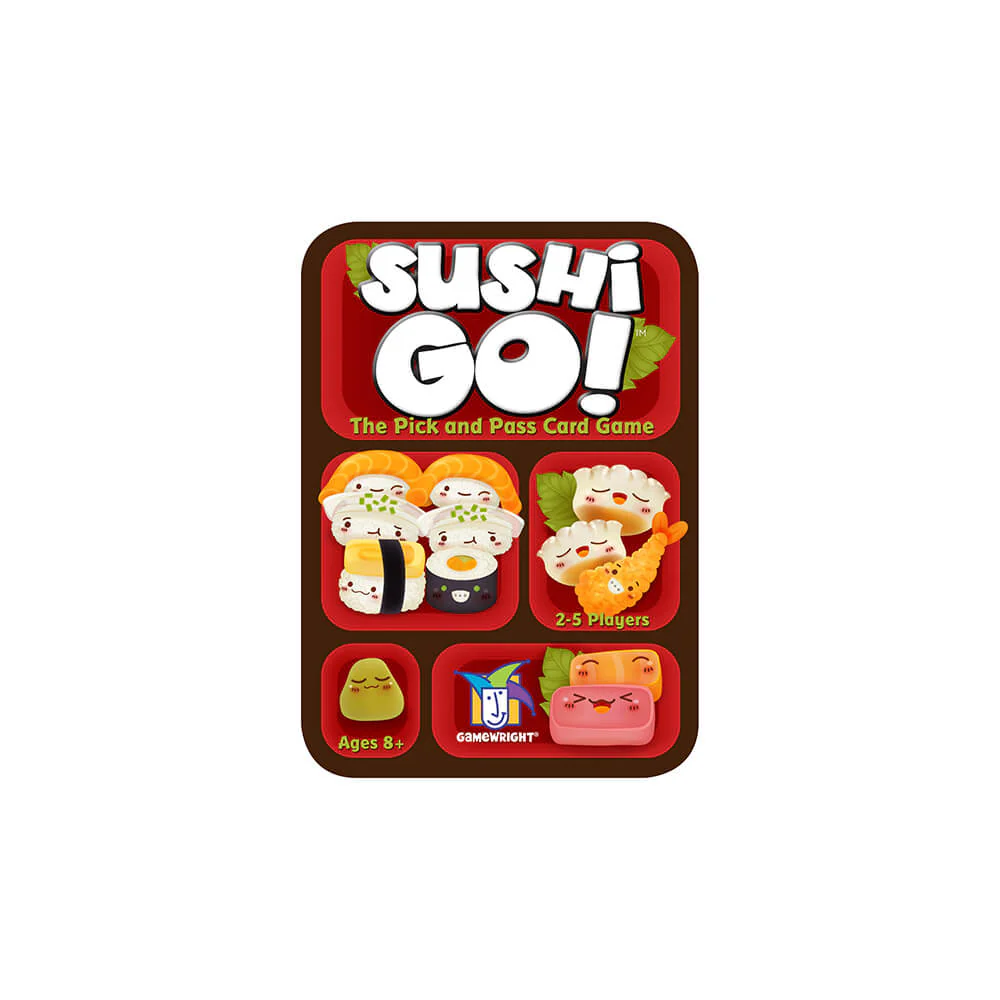Sushi Go!, designed by Phil Walker-Harding and published by Gamewright, is a card-drafting game that is intended for ages 8 and up. Its intended audience, simple mechanics, and cooking-based gameplay seemed similar to my team’s concept (What’s For Dinner?), so I wanted to further explore what makes Sushi Go! so popular to apply any takeaways to my team’s game. After playtesting, I have concluded that the card-drafting and set collection mechanics of Sushi Go! create dynamics of risk-value assessment and luck, which in turn enhance the central game aesthetics of challenge and competition. Essentially, with no incentive for the players to collaborate, the game is fun because there is only one winner who wins by using a combination of skill and good luck. In contrast, What’s For Dinner’s primary mechanics of hidden roles and ingredient card selection create dynamics of bluffing and constant communication, which in turn create the aesthetics of fellowship and competition. Overall, What’s For Dinner’s ability to create memorable moments of discovery when a trusted ally is actually the saboteur chef or when the deceiver is finally unmasked is what makes the game fun.
The core of Sushi Go!’s design lies in its card-drafting mechanic, a seemingly simple yet strategic system that forces players to make meaningful choices with each turn. More specifically, in a single round, each player receives a number of cards from a deck of sushi-themed cards. The end goal of each round is to gather the combinations of cards that represent the most points. For example, playing a “Nigiri” card gives the player two points, whereas a pair of “Tempura” cards gives them five points (and no points with a single “Tempura” card). Then, after playing a card, each player passes the remaining cards to the player on their left, plays another card from their new hand, and repeats this process until the cards run out. Therefore, as players select a card from their hand and pass the remaining cards to the next player, they must constantly weigh the potential benefits of keeping a card for their own sets against denying their opponents valuable combinations.

As shown in this specific hand, which includes three “Nigiri” cards, one “Dumpling” card, and three “Maki” cards, the player must carefully choose which one to play. If they want to build up points quickly with no risk, they might play a “Nigiri” card to receive 2 points; if they want to prioritize long-term potential points, they might play a “Maki” card and continue gathering “Maki” cards to receive the 6 points awarded to the player with the most “Maki” cards at the end of the game. The dynamics that come from this choice—assessing the risk and relative value of playing certain cards over others as well as luck—push the player to gather the most points possible while blocking the other players from getting their desired cards. Therefore, this card-drafting mechanic encourages players to think not only about their own strategies but also to anticipate the moves of their opponents. This “metagaming” aspect adds depth to the player experience and rewards those who can accurately read the table and adapt their plans accordingly. By making players consider the motivations and potential actions of others, Sushi Go! creates a type of competitive obstacle course where they need to outwit and be luckier than the others in order to win and have fun.
In contrast, What’s For Dinner employs hidden role and ingredient card selection mechanics that give rise to different dynamics and aesthetics. Both create a dynamic of bluffing, where the “saboteur” chef must subtly undermine the dish without revealing their identity, while the regular chefs must work together to create a coherent dish. This dynamic fosters a sense of collaboration and teamwork that is not seen in Sushi GO! as players must communicate and coordinate with each other in order to succeed. Additionally, it encourages players to analyze the actions and motivations of others, leading to a greater emphasis on psychological gameplay. Because the saboteur chef has a different goal and set of incentives than the regular chefs, What’s For Dinner creates a unique asymmetry in the player experience. For example, in one round of the playtest, I was given the role of the regular chef and worked out which ingredients made the most sense for the given dish to collaborate with who I concluded to be other regular chefs. Afterward, I would make comments like “I chose tomato because it’s a key ingredient in the sauce” to help the judge understand what dish the chefs had created. However, on another round of the playtest, as the saboteur chef, I leveraged the credibility I had built up in previous rounds as a regular chef and chose an ingredient (i.e. egg) to mislead the judge into guessing the wrong dish. Therefore, as demonstrated by this experience, this asymmetry leads to collaboration (or faked collaboration if you are the saboteur), building up the fellowship aesthetic and memorably breaking it down if someone you trusted is the saboteur.
While both Sushi Go! and What’s For Dinner involve food-related themes and strategic decision-making, their mechanics give rise to different types of fun. On one hand, Sushi Go!’s card-drafting and set collection mechanics create a competitive environment wherein individual achievement is valued. Players must rely on their own skill and luck to outperform the other players (opponents). On the other hand, What’s For Dinner’s hidden role and ingredient card selection mechanics lead to social interaction and teamwork-based experiences. Players (teammates) must work together—or at least pretend to do so—to find the saboteur.



